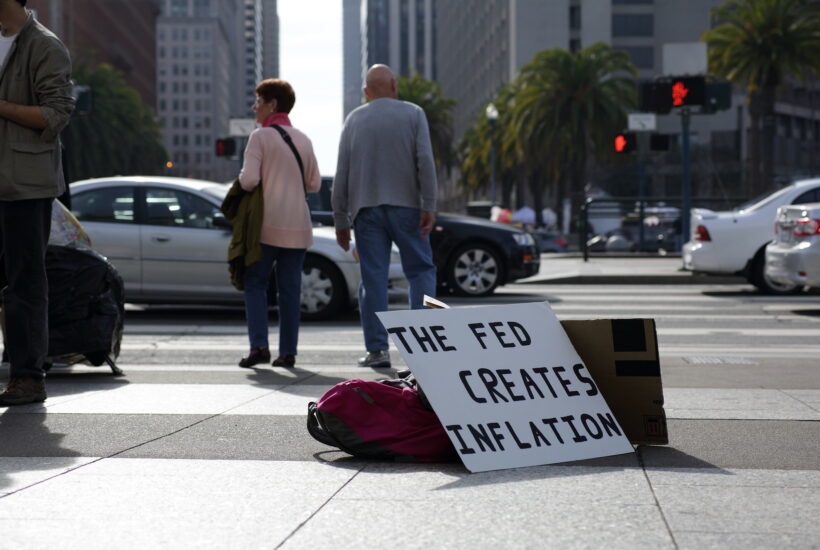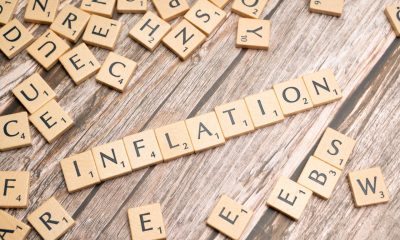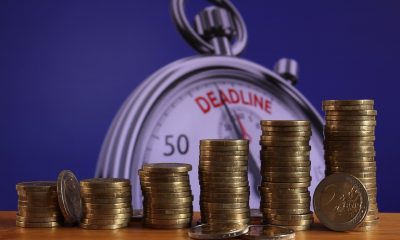Featured
Understanding the Fed’s Rate Hike: the Long Term Goal of 2.0% Inflation
America has witnessed several of its longest economic expansions occur during the last forty years, and this is directly tied to long periods of low inflation. Inflation is often considered the cruelest tax of all, hitting every aspect of the economy, and leaving the most vulnerable least prepared to handle it. The Fed will continue to play its role in controlling price stability and employment.

On May 4th, 2022, the Federal Open Market Committee (FOMC) voted unanimously to raise the Fed Funds rate 0.5%, or 50 basis points (BPS), to 0.9%. The Open Market Desk at the Federal Reserve Bank of New York shall use operations necessary to keep the rate within a target of 0.75% and 1.00%. This is the second rate hike in two months and the largest since 2000. If you are wondering why this happened or what it means, let me help you make sense of it all.
Why and Why Now?
Federal Reserve Chairman, Jerome Powell, made an opening statement in which he spoke directly to the American people and commented that inflation is “much too high”. The Fed is tasked with a dual mandate of maintaining price stability, something Powell came back to several times throughout his press conference and pursuing maximum employment. In regard to price stability, the Fed adheres to a long-term goal of 2.0% inflation. The Personal Consumption Expenditures (PCE) index rose a staggering 6.6% over the past 12 months.
In an effort to tame this inflation, and with assistance from a very tight labor market (March unemployment was 3.6%), the FOMC felt ready to implement a 0.5% rate hike. More rate increases of the same size are projected to come later this year (the Fed meets every six weeks, totaling eight times annually). In addition, the Fed is beginning to significantly reduce the size of its balance sheet starting June 1, 2022, by letting $30 billion of Treasury securities roll off monthly for the next three months, and then $60 billion per month thereafter. Powell cited estimates equating this reduction to one 0.25% interest rate increase over the year, but with wide uncertainty bands. Interest rate manipulation will continue as the Fed’s primary tool of monetary policy.
In plain English, there is too much money floating around the American economy propping up demand of all varieties, but not nearly enough supply to meet these demands. The Coronavirus pandemic, semiconductor chip shortages, the Great Resignation, war in Ukraine cutting the commodity patch in half, and recent Covid-related shutdowns in China, have all led to supply shocks. These supply issues paired up with the residual effects of enormous monetary and fiscal reactions over the past two years have led to a unique kind of inflation. The mismatch between supply and demand is forcing consumers and businesses to pay more for everything. Ideally, supply would pick right back up and fulfill all the demands, negating the need for the Fed’s involvement. However, like a business owner who needs to balance their cash flow, laying off an employee is an immediate savings, whereas hoping for future profits takes time and is no guarantee. The Fed intends to use a “restrictive” policy to get closer to a “neutral” stance in terms of interest rates. Higher interest rates and the reducing of the Fed’s balance sheet will naturally slow demand to sync up with supply, and hopefully restore price stability.
What Does It All Mean?
One might think that raising interest rates makes things tougher during an already tough time, like fighting fire with fire. This assumption is quite accurate. Powell did not shy away from the short-term pain interest rate hikes can cause, but reiterated the Fed’s goal for medium and long-term prosperity. When demand outpaces supply by such a wide margin, prices for everything go up faster than the 2% target inflation rate. The Fed can effectively play demand-side economics by cutting the money supply. Raising the Fed Funds rate causes interest rates of all sorts to go up… higher mortgage rates, credit card rates, auto loans and student loans, increased borrowing costs for all consumers and businesses. People will have less to spend and less to invest. These realities appear to hit the most vulnerable populations first too, folks on fixed incomes or in the lower income segment. However, entrenched inflation and rising costs of living represent a much greater risk to those without much room in their budget.
While the medicine may be tough to swallow, the FOMC felt confident in its timing, essentially saying it’s not a tough time all around. The economy is doing well, there are expectations of solid economic growth this year, business investment has been strong, there are plenty of job opportunities, and wages have been increasing at record rates. Ideally labor supply would grow to meet all this pent-up demand as employers struggle to fill jobs, but the Fed is looking to slow demand first to balance the labor market. Similarly, manufacturing supply would catch up to get consumers their cars, oil, and other resources, but increased borrowing costs will slow consumer demand to relieve supply pressure.
While the Fed considers all markets, not just housing, equities, etc., it is typical for rising interest rates to knock down the stock market as overall liquidity becomes tight. However, in the weeks leading up to the Fed’s announcement, the stock market had already taken a hit with fears of a possible 0.75% rate increase looming. Therefore, the 0.5% increase came as welcomed news, and all sectors gained substantially as Powell spoke about the Fed’s plan for 2022 and the options available in such a strong economy. In response to the questions regarding a possible recession due to inflation already being so high, Powell pointed out a recession usually coinciding with high unemployment, whereas right now it is a great time to be a worker or one looking for a job. Unemployment for all racial groups is nearing pre-pandemic levels.
America has witnessed several of its longest economic expansions occur during the last forty years, and this is directly tied to long periods of low inflation. Inflation is often considered the cruelest tax of all, hitting every aspect of the economy, and leaving the most vulnerable least prepared to handle it. The Fed will continue to play its role in controlling price stability and employment, often to near-term discomfort and chagrin of sitting politicians, but in order to continue long-term prosperity, inflation must be restrained.
__
(Featured image by John Loo CC BY 2.0 via Flickr)
DISCLAIMER: This article was written by a third party contributor and does not reflect the opinion of Born2Invest, its management, staff or its associates. Please review our disclaimer for more information.
This article may include forward-looking statements. These forward-looking statements generally are identified by the words “believe,” “project,” “estimate,” “become,” “plan,” “will,” and similar expressions. These forward-looking statements involve known and unknown risks as well as uncertainties, including those discussed in the following cautionary statements and elsewhere in this article and on this site. Although the Company may believe that its expectations are based on reasonable assumptions, the actual results that the Company may achieve may differ materially from any forward-looking statements, which reflect the opinions of the management of the Company only as of the date hereof. Additionally, please make sure to read these important disclosures.

-

 Biotech1 week ago
Biotech1 week agoVytrus Biotech Marks Historic 2024 with Sustainability Milestones and 35% Revenue Growth
-

 Crypto3 days ago
Crypto3 days agoRipple Launches EVM Sidechain to Boost XRP in DeFi
-

 Africa1 week ago
Africa1 week agoCôte d’Ivoire Unveils Ambitious Plan to Triple Oil Output and Double Gas Production by 2030
-

 Business1 week ago
Business1 week agoThe TopRanked.io Weekly Digest: What’s Hot in Affiliate Marketing [NordVPN Affiliate Program Review]
























